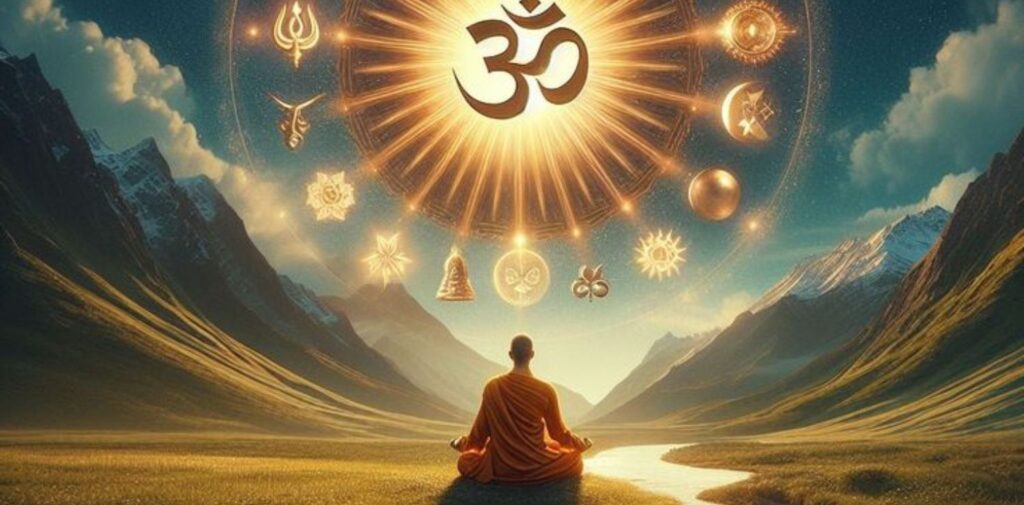Introduction
In the vast and intricate world of Hindu philosophy, few concepts are as profound and central as Brahman. Often misunderstood or simplified, Brahman represents the ultimate, unchanging reality that underlies and pervades everything in the universe. It is not merely a god or deity, but the very foundation of existence, consciousness, and bliss.
Etymology and Meaning
The word Brahman is derived from the Sanskrit root “brh”, which means to grow, expand, or swell. This reflects the all-encompassing, boundless nature of Brahman. Unlike the term Brahmin (a caste or priestly class), Brahman refers to the supreme metaphysical principle.
Brahman in the Vedas and Upanishads
The earliest references to Brahman appear in the Vedas, the oldest sacred texts of Hinduism. Initially, the term was used to signify the power of sacred speech and ritual. However, in the Upanishads—the philosophical culmination of the Vedas—Brahman takes on a deeper, metaphysical meaning.
The Upanishads describe Brahman as:
-
Nirguna Brahman – without attributes, form, or qualities. It is pure existence, infinite and indescribable.
-
Saguna Brahman – with attributes, as seen in manifestations like Vishnu, Shiva, or Devi, to help devotees connect with the divine on a personal level.
Core Characteristics of Brahman
-
Infinite and Eternal – Brahman has no beginning or end. It transcends time and space.
-
Impersonal and Formless – It is beyond physical form or human traits.
-
Sat-Chit-Ananda – Brahman is described as:
-
Sat (pure being)
-
Chit (pure consciousness)
-
Ananda (pure bliss)
-
-
All-Pervading – Everything in the universe is a manifestation of Brahman; it is both immanent and transcendent.
Brahman and Atman
One of the most profound teachings in Hindu philosophy is the identity of Atman (the individual soul) and Brahman (universal soul). The Mahavakya (great saying) “Aham Brahmasmi” (“I am Brahman”) from the Brihadaranyaka Upanishad expresses this oneness.
This means that the essence of each individual is not separate from the ultimate reality. Self-realization in Hinduism involves understanding and experiencing this unity.
Brahman in Different Schools of Hindu Philosophy
Different philosophical schools interpret Brahman uniquely:
-
Advaita Vedanta (Non-dualism) – Advocated by Adi Shankaracharya, this school teaches that only Brahman is real; the world is maya (illusion) and Atman is not different from Brahman.
-
Vishishtadvaita (Qualified Non-dualism) – Propounded by Ramanuja, it accepts Brahman as personal (identified with Vishnu), with the world and souls as real and dependent parts.
-
Dvaita (Dualism) – Founded by Madhvacharya, this school maintains that Brahman (Vishnu) and the soul are eternally distinct.
Modern Perspectives
In contemporary spiritual discourse, Brahman is often compared to the concept of cosmic consciousness or the universal mind. It resonates with ideas in quantum physics and mysticism, where all matter and energy are seen as interconnected expressions of a deeper, unified reality.
Conclusion
Brahman is not a concept to be grasped merely by intellect—it is to be experienced. It represents the ultimate quest in Hindu thought: to transcend the illusion of separateness and realize our true nature. Whether approached through meditation, devotion, or philosophical inquiry, the path to Brahman is a journey toward unity, peace, and enlightenment.
If you need this article adapted for academic use, spiritual instruction, or a publication with citations, let me know—I can tailor it accordingly.






